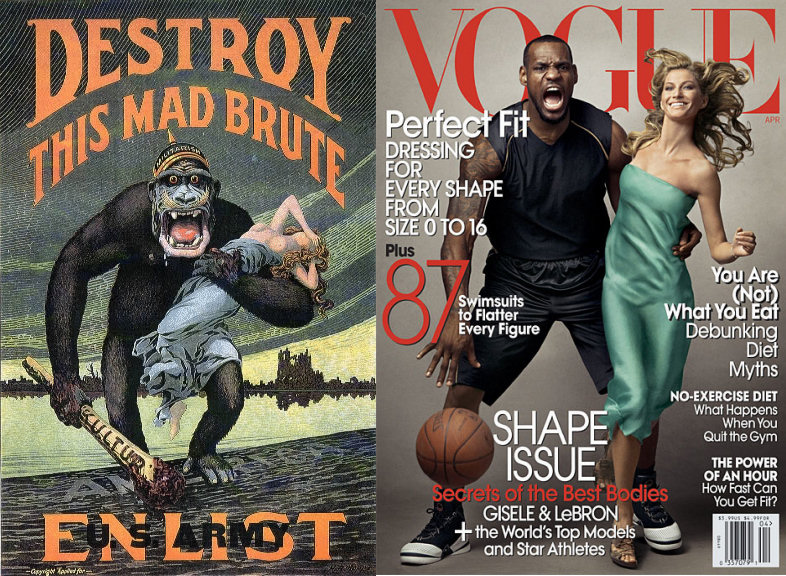 Black women are often featured as sexual objects in fashion advertisements. In this ad the black model is not making eye contact with the viewer, her breast are exposed, her face is covered up by a mask, and she is wearing a type of bondage apparatus. She is contrasted with the confident white model who is making direct eye contact with the viewer and is clothed. The implied message in this advertisement is that the black model is purely a sexual object to be possessed and looked at, but the white model commands more respect from the male viewer.
Black women are often featured as sexual objects in fashion advertisements. In this ad the black model is not making eye contact with the viewer, her breast are exposed, her face is covered up by a mask, and she is wearing a type of bondage apparatus. She is contrasted with the confident white model who is making direct eye contact with the viewer and is clothed. The implied message in this advertisement is that the black model is purely a sexual object to be possessed and looked at, but the white model commands more respect from the male viewer.

These two images are terrifying examples of the way black women's sexuality is reduced to racist notions of animal aggression. These black female representations were articulated in Bell Hooks' article Selling Hot Pussy where she uses examples of different black women to describe how white viewers have enjoyed seeing black sexuality as something "exotic" and "animal" in order to further "other" them. In the top image, the model is carrying a whip and has chains around her ankles. Both items are reminiscent of slavery.
However, the model is smiling and naked and the image is suggesting that she likes being chained up, whiped, and treated like an animal. In the next image she is naked in a cage baring her teeth like an animal. If that wasn't enough the sign above the cage reads, "Do Not Feed The Animal." In these fashion advertisements, the photographers made blackness "othered" by depicticating their sexuality as something deviant and animalistic. These types of advertisements make black women into racist caricatures that are not only demeaning to the black models, but all women of color.

